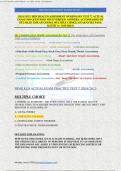College aantekeningen
Aantekeningen hoorcolleges Psychopathology: symptoms, classifications and diagnosis / Notes from the lectures of Psychopathology: symptoms, classifications and diagnosis. ISBN: 9780890425794
- Instelling
- Rijksuniversiteit Groningen (RuG)
Aantekeningen van de hoorcolleges van Psychopathology: symptoms, classifications and diagnosis. Bachelor Psychologie. Rijksuniversiteit Groningen. Collegejaar 2022/2023. / Notes from the lectures of Psychopathology: symptoms, classifications and diagnosis. Bachelor Psychology. University of Gron...
[Meer zien]













